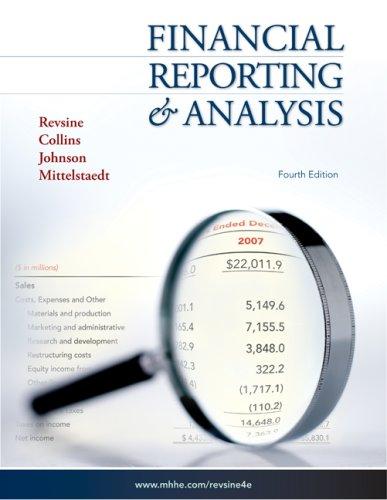Question
1. Why are general capital assets recorded in an off the balance sheet list or schedule, rather than a fund? 2. A state incurs interest
1. Why are general capital assets recorded in an "off the balance sheet" list or schedule, rather than a fund? 2. A state incurs interest on funds used while a highway was under construction. How will this interest be accounted for on the state's (a) capital project's fund statements and (b) government-wide statements?
3. How should governments report their long-lived assets in their government-wide financial statements?
Governments report their long lived assets in their financial statement just as a business would. They report an annual expense for depreciation and on their statement of net assets they report their assets at historical cost less accumulated depreciation.
4. A city establishes an art museum. What options does it have in accounting for its collection of paintings?
5. Although Statement No. 34 requires that infrastructure assets be accounted for similarly to other capital assets, it allows for a major exception with regard to depreciation. What is that
exception?
6. Why have many government officials objected to Statement No. 34's requirement that infrastructure assets be accounted for similarly to other capital assets?
7. What are deferred maintenance costs, and when and how must a government report them (as they relate to infrastructure) in its financial statements?
8. Per the provisions of Statement No. 34, governments must report their capital assets similarly to businesses in their government-wide statements. Yet the information provided is still inadequate to facilitate the major types of decisions and judgments made by statement users. Do you agree? Explain.
9. What are the differences between market risk, credit risk, and legal risk? Suppose that a local government invests in 20-year U.S. government bonds. Assess each of the three risks and discuss the disclosures required by a government on its financial statements.
10. What are derivatives? Why can they be especially high-risk securities?
11. How can governments use derivatives as a means of reducing investment or borrowing risks?
Step by Step Solution
There are 3 Steps involved in it
Step: 1

Get Instant Access to Expert-Tailored Solutions
See step-by-step solutions with expert insights and AI powered tools for academic success
Step: 2

Step: 3

Ace Your Homework with AI
Get the answers you need in no time with our AI-driven, step-by-step assistance
Get Started


